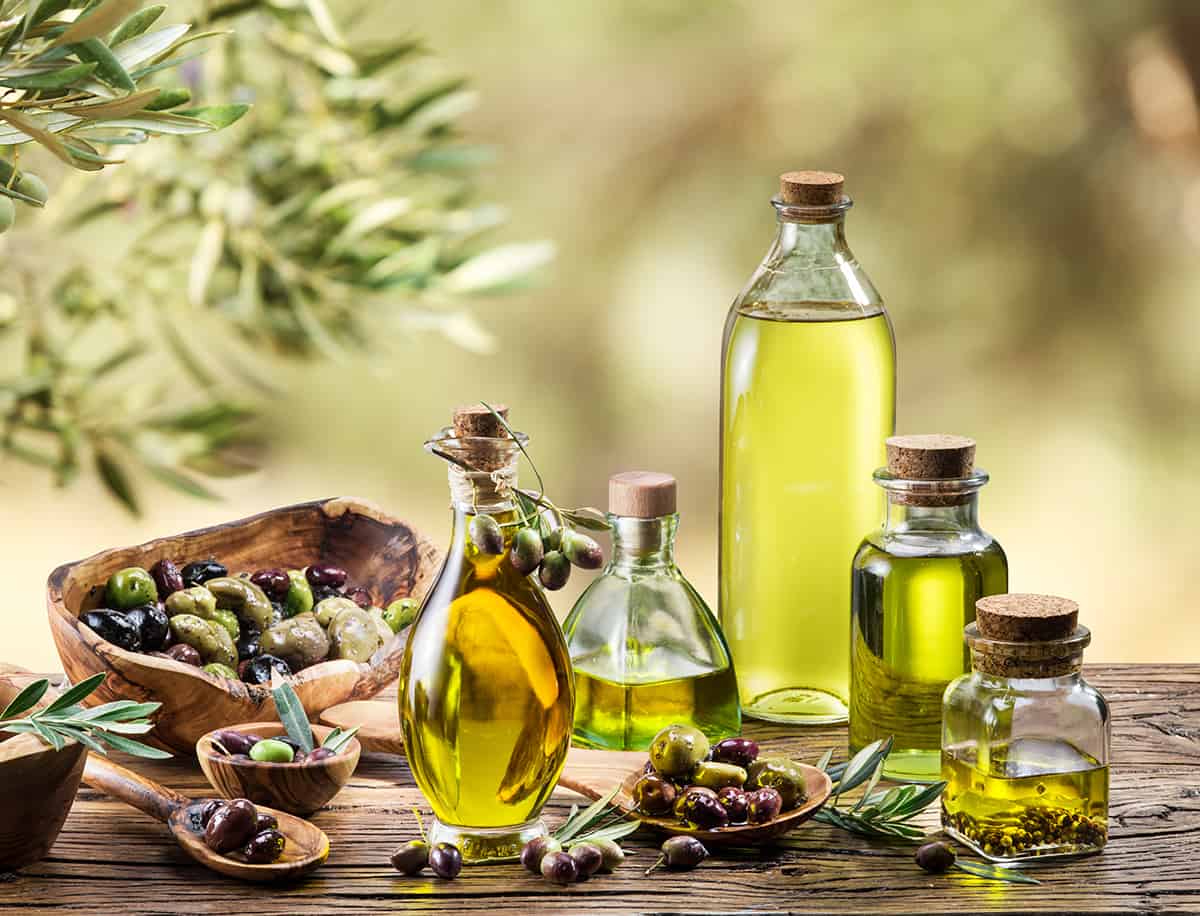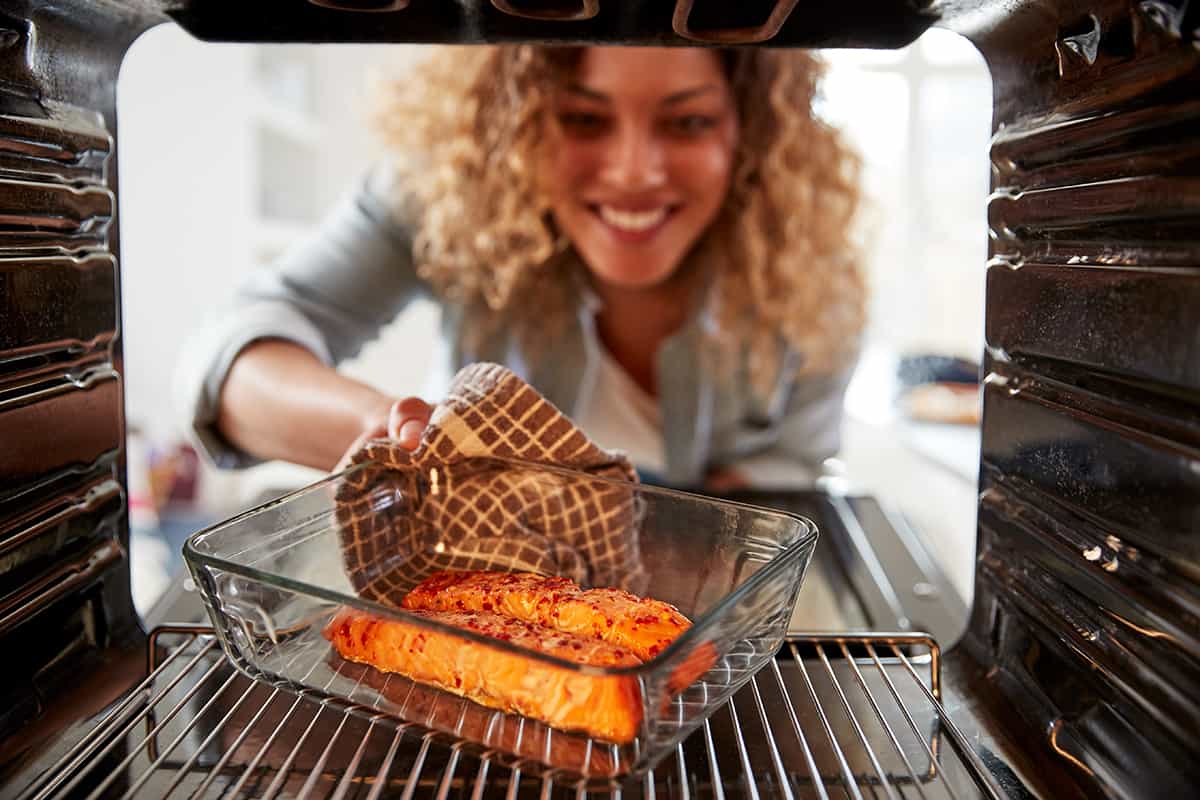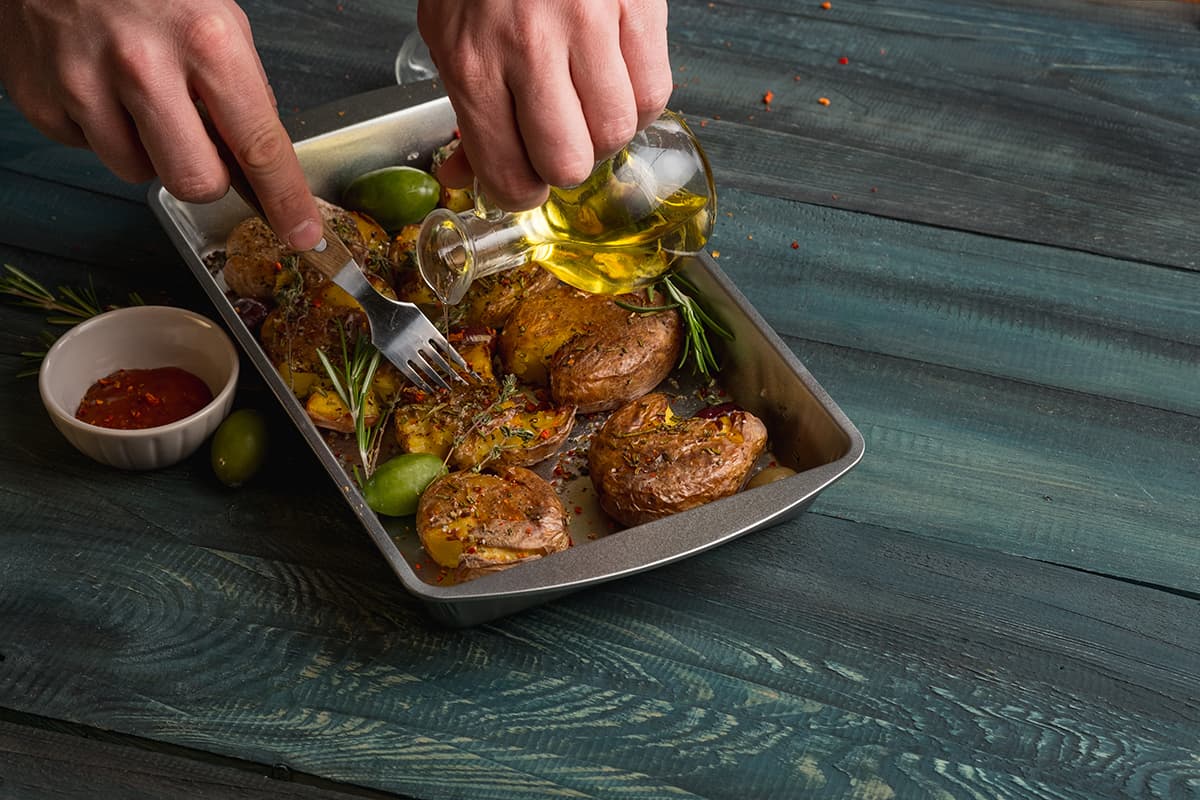It’s common knowledge that olive oil is good for you, but how well does it fare in the heat of an oven? Most people will know that olive oil has a pretty low smoke point (374 to 405°F), so surely, it can’t withstand an oven set to 450°F or higher, right?
It is safe to use olive in an oven. That said, you should only apply a thin layer of olive oil when baking at high temperatures (400°F and above) or broiling. Even then, you should keep a close eye to make sure the oil doesn’t smoke and burn.
In this guide, I’ll go on to explain the different types of olive oil, what happens when olive oil is heated beyond its smoke point and the alternatives to using olive oil when baking.
Types of Olive Oil

If you ask an employee at your local grocery store for olive oil, they might ask you back, “What kind?” You see, there are a handful of olive oil types. While they’re all derived from olive fruit, there are slight differences that make them taste, feel, and even smell different.
1. Extra Virgin Olive Oil
There are two types of olive oils, refined (which is whiter and cleaner) and unrefined (virgin and extra virgin). In the first case, processing with solvents and high heat can improve the result because the oil’s flavor and quality are subpar. The olives in the second group do not benefit from further processing with heat or chemicals because of their superior quality. The oil is extracted through mechanical pressure rather than heat or chemicals.
Extra virgin olive oil is less acidic, tastier, less processed, and not mixed with other oils during the manufacturing process. It also has a relatively decent smoke point of around 400°F. If the percentage of free fatty acids in olive oil is less than 0.8%, then it is considered extra virgin.
2. Virgin Olive Oil
The second type of olive oil that falls into the unrefined category is virgin olive oil. The fatty acid content of virgin olive oil ranges from 0.8% to 2.0%. Any olive oil’s initial acidity is zero; over time and depending on storage conditions, the oil will become more acidic. Virgin olive oil also has a high smoke point of around 400°F, making it another optimal choice for baking and brushing on broiled food items.
3. Pure Olive Oil
These terms refer to the oils extracted from the olive fruit that do not meet the criteria for the virgin label due to acidity levels or other factors. Olive oil that doesn’t meet that standard is refined with heat and/or chemicals to remove off-flavors and smells. As a result, pure olive oil is flavorless and almost colorless, saved only by adding a trace amount of virgin olive oil.
There should be at least 10% virgin oil in pure olive oil, and oleic acid levels should be between 3% and 4%. It has a higher smoke point and more muted flavor than virgin oils, making it a versatile oil for any type of cooking.
4. Refined Olive Oil
After olives are harvested, they undergo a series of refining processes, which aim to alter the oil’s characteristics without changing its glyceridic structure. Refined olive oil is typically odorless and flavorless, with a pale or clear hue. It doesn’t have as many health benefits as its “purer” counterparts, and its smoke point is considerably lower (around 350°F). Use this with caution when baking!
5. Olive Pomace Oil
The final type is another type of refined olive oil called olive pomace oil. This oil is extracted from the olive pulp that has been initially pressed to make extra virgin olive oil, so it has lost a lot of its health and aromatic properties. Oddly enough, it has a super-high smoke point of 460°F, making it even better safer for baking in an oven at higher temps.
What Happens When Olive Oil Reaches Its Smoke Point?

Olive oil begins to degrade and smoke when heated past its smoke point. When the oil’s fatty acids and other components begin to decompose, smoke is produced. The byproducts of this process, such as free radicals, can be dangerous to human health. The flavor and nutritional value of the oil can be lost if heated to excessive levels.
It’s worth noting that smoke point varies with olive oil variety and processing. The smoke point of extra virgin olive oil is lower than that of regular olive oil or even olive oil that has been refined. As a result, you shouldn’t use extra virgin olive oil for frying or any other high-temperature cooking method. Instead, use it in cold applications like dressings and dips where it won’t be subjected to high temperatures.
Oils with higher smoke points are preferable for use in high-heat cooking methods, while oils with lower smoke points are better suited for use in dishes that will not be exposed to high heat. To prevent the oil from losing its beneficial nutrients and flavor when cooking, it is crucial to avoid heating it past its smoke point.
Alternative Oils for Baking
Olive oil can be replaced with any of a number of other oils with higher smoke points when cooking at high temperatures. For instance:
- Canola oil: Oil extracted from canola seeds can be used in cooking up to temperatures of 400 degrees Fahrenheit. It has no discernible taste and works well in high-temperature preparations like frying, sautéing, and baking.
- Peanut oil: This peanut oil can be used in temperatures up to about 440°F before it begins to smoke. It has a mild, nutty flavor and works well for deep frying.
- Avocado oil: The avocado fruit is processed to extract an oil with a smoke point of about 520°F. This cut of meat works well in high-temperature preparations like sautéing, grilling, and stir-frying. It tastes mild and slightly buttery.
- Grapeseed oil: A smoke point of about 420°F gives this oil, extracted from grape seeds, a useful property. It has no discernable flavor and can be used for frying, sautéing, and other high-temperature cooking methods.
- Safflower oil: Safflower oil has a smoke point of about 510°F and is extracted from the seeds of the safflower plant. It is a mild oil with no discernible flavor that works well in high-temperature applications like frying, sautéing, and baking.
Granted, many of the oils listed above are not as flavorful or as beneficial as olive oil, but when the risk of burning oil involves possible carcinogens, you should sacrifice safety for flavor 100% of the time.






